You know when you have a new experience that really gets you thinking, about stuff you’ve been meaning to think more about? Well, I just had two. They both were centered on food, though unrelated, and ended up being weirdly parallel.
The first one was a movie. GMO OMG was recently screened in my little town of Bellingham, Washington. I had offered extra credit to the students in my NUTR 101 class at the community college if they showed up, so figured I’d go and try to learn a little more about this enormous, divisive topic myself; especially since I’m going to cast a vote on Washington’s I-522 genetically modified food labeling initiative next month.
Whether or not this movie is a balanced account of the arguments for and against genetically modifying food, it reminded me for what must be the two-hundred-and-seventy-first time that it’s always better to know more about where your food comes from than less. Following this simple rule will take care of about 75% of the confusion about what’s healthy to eat vs. what’s questionable or suspicious. I do know history has shown us that the more you mess with a food — like hydrogenating liquid fats or refining whole grains — the less healthy it becomes, in general. Changing food at the genomic level seems to be the ultimate step in the wrong direction.
The second one was a meal. On a rainy, blustery, down-poury day in September I was lucky enough to visit 21 Acres Center for Local Food and Sustainable Living in Woodinville, WA. It was cozy inside their soon-to-be LEED-certified building, and the guest Chef, Chris Feller, whipped up a meal that felt like fall.
In addition to knowing where your food comes from, you can also consider how far your food has traveled. For our meal at 21 Acres, everything journeyed less than 100 miles to arrive on our plates. As an aside, this is one reason why I’m such a fan of Community Supported Agriculture. We purchase shares in Cedarville Farm every year which means we not only know our farmer (Mike); we know we’re eating certified organic and non-GMO vegetables, herbs and fruit; and we know it’s all gone just 16 miles from farm to fridge.
Let’s take a breather for a moment, shall we? Let’s step away from the serious issues at hand to simply enjoy some healthy, local food porn, courtesy of Chef Chris:
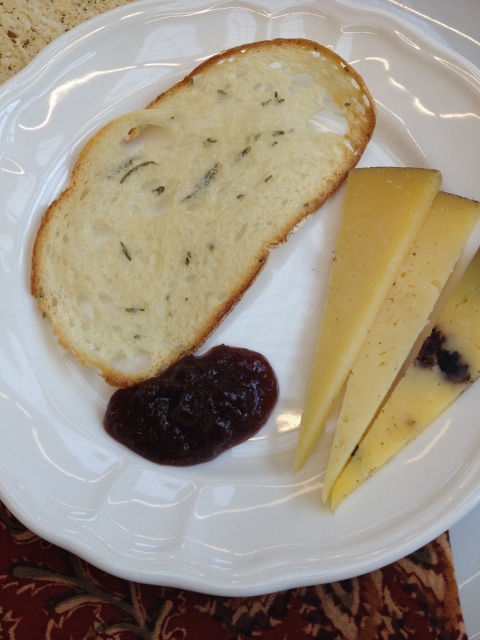
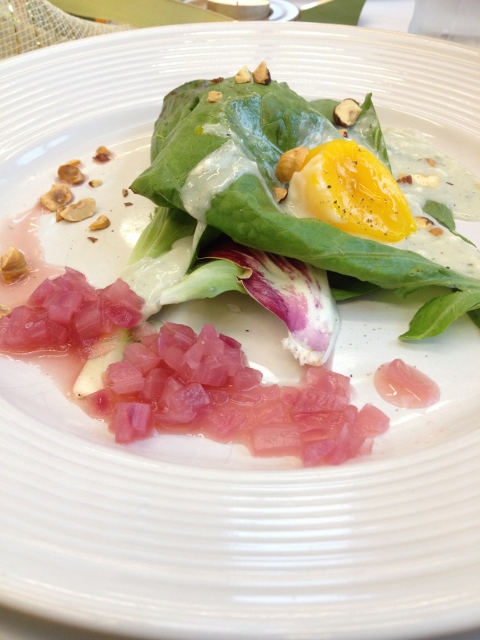
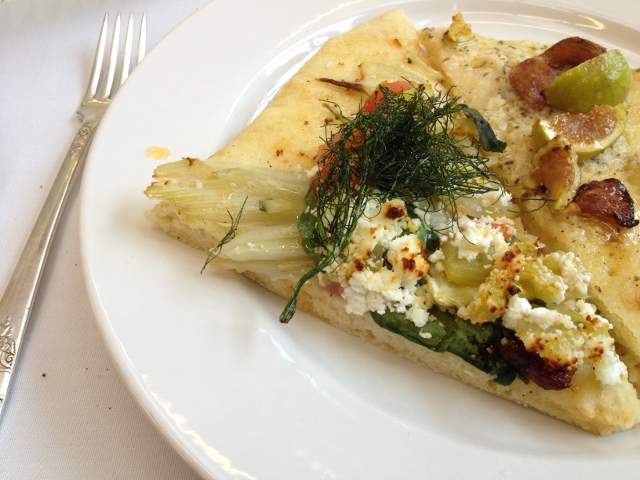
Pizza on the right: herb marscapone and fig with thyme honey drizzle
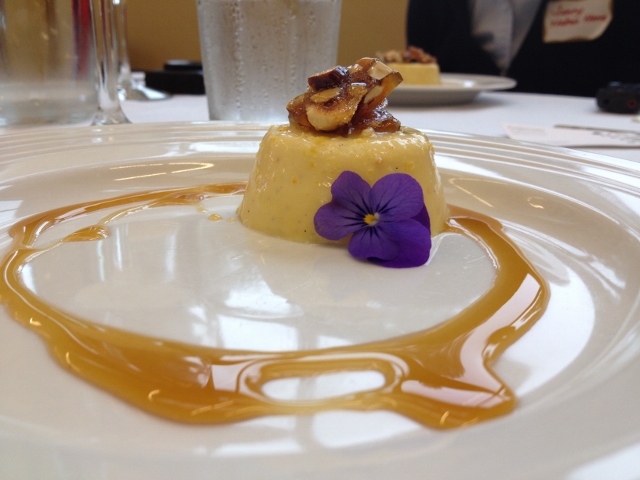
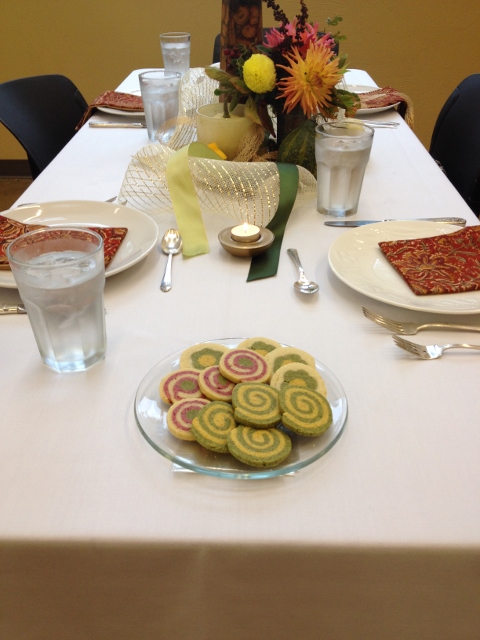
Seeing movies like GMO OMG makes me all the more thankful for places like 21 Acres. As biochemical companies go to the extremes of genetically modifying seeds to resist herbicides, places like 21 Acres are taking things about as far as you can go in the opposite direction. Not only do they run their own certified organic farm on site, they serve as a food hub to help distribute healthy food to childcare centers and restaurants, have a market full of organic and GMO-free local farm products, and offer classes on growing, eating and living this way; whatever serves their mission of sustainability. Could they be doing any more things right?
I don’t think I’m alone in noticing this dichotomy in our food supply, and yearning for more real eats and less technology. I was just reading an article about food trends in the newsletter published by a professional group of culinary dietitians. They identified a surging interest in “simple, quality, local, sustainable, transparent” food. And, the theme for National Food Day on October 24th this year is “healthy, affordable, and sustainable food”. Hopefully, this really is the future of consumer demand regarding our food supply. And hopefully, I-522 passes since we can’t have transparency without labeling. Even if you won’t be voting in November’s election on this issue, you can still vote daily, weekly, and monthly with how you spend your grocery and restaurant dollars.
How do you support a simple, quality, local, sustainable, and transparent food supply?
I got invited to this luncheon because I’m a local blogger and because I’ve know the Marketing and Development Director at 21 Acres for many years, back when she was just my friend, Robin. I got to enjoy a wonderful meal, free of charge, and now I’m spreading the word about the great work they’re doing.
If you liked this post, you may also enjoy:

Kristine Duncan, Registered Dietitian
I’m a Registered Dietitian, the author of Veg Girl RD, and a vegetarian who loves to eat. I’m a nutrition nerd who teaches at the University of Washington and Skagit Valley College. I also write about nutrition professionally for magazines and books. If you want to know more, check out my About page.

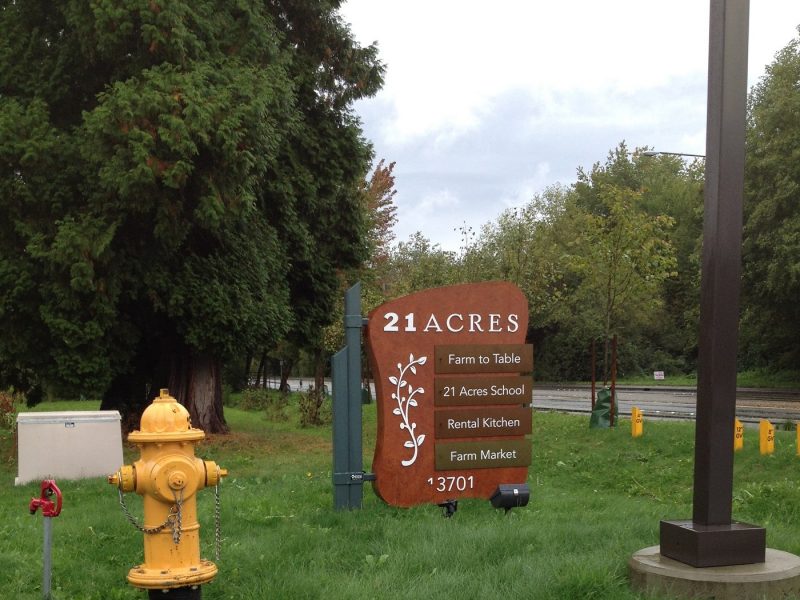
10 thoughts on “Sustainable food, GMO labeling and kale powder”
Thank you for coming to 21 Acres and for writing about the experience in such a nice way. We love hosting vegetarians! We’re committed to helping people move to more plant-based diets — its better for human AND environmental health. We can’t urge people enough to vote for the GMO labeling bill coming up on the ballot in Washington. As you mention, its always better to know more about where your food comes from than less. Great blog!
Thanks for setting the bar so high for food production and distribution in Washington State!
Panna Cotta is made with gelatin, which is not vegetarian. Did the chef come up with a new way to make it?!
You make a good point. I didn’t ask directly, but I’m pretty sure it was made the traditional way. 🙁 I was the only vegetarian at the luncheon that day, which required them to alter the pizzas so mine wouldn’t have meat. I was very grateful for that, so forgot to think through to the dessert course after that. (It’s generally a part of the meal that has a high probability of being meat-free.) To be honest, it was partially my own ignorance, too. When I saw the dessert, I assumed it was prepared like a flan or a pudding, so figured I was A-OK. Your comment reminds me to ALWAYS ask first before digging in. Thanks. 🙂
Must ALL panna cotta use gelatin? A quick Google search and you’ll find many panna cotta recipes with vegetarian alternatives to gelatin.
Thanks for looking into that, Jeff. Very cool to know there are options.
Hi everybody!! Chef Chris here 🙂 I feel terrible about the Panna Cotta and you being a vegetarian! I’m truly sorry I should have told you that it was made with Gelatin.
I also wanted to share with everyone that Agar Agar, which comes from kelp I think or some sea plant is a suitable substitute for Gelatin in vegetarian cooking. It holds up nicely at room temperature and isn’t hard to use. I personally prefer Gelatin in Panna Cottas because Agar can leave the final product a bit grainy.
I hope you enjoyed your meal in spite of my oversight 🙂
Great blog by the way!
Cheers!
Chris
Thanks for stopping by, Chris, and taking the time to comment. That’s so kind. I did indeed enjoy my meal, beyond measure. I was really delighted to see what you could create despite your “limitations” of seasonal and local ingredients.
Oh my goodness we are so sorry for not thinking about the gelatin! I too, am a vegetarian, and wish that I would have had the forethought to offer you an alternative.
Thank you very much for your concern. It’s OK. 🙂 I’m not sure I’d ever eaten panna cotta before, so now I’ve learned something new I didn’t know before. And, as my husband pointed out, the conversation going on in the comments here is quite educational and interesting. It’s all good.